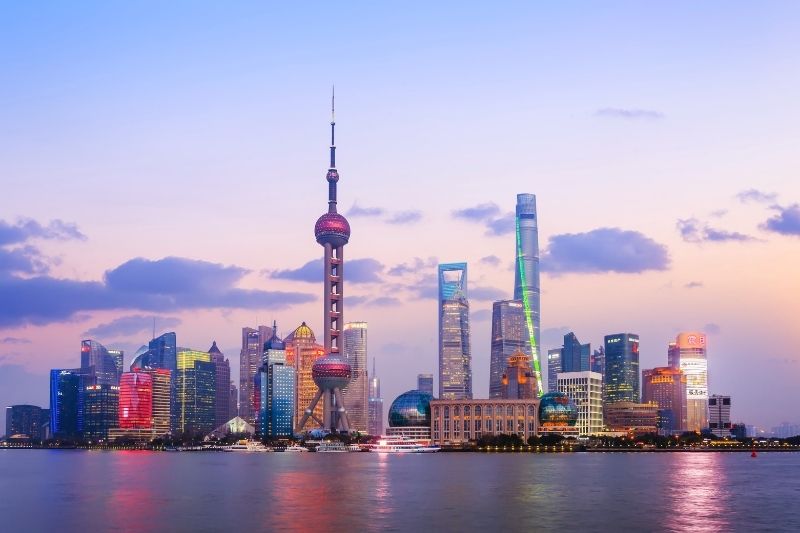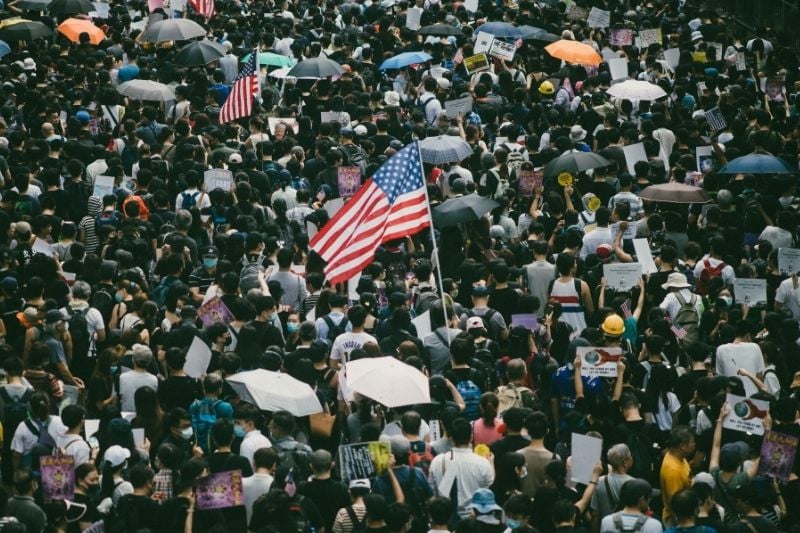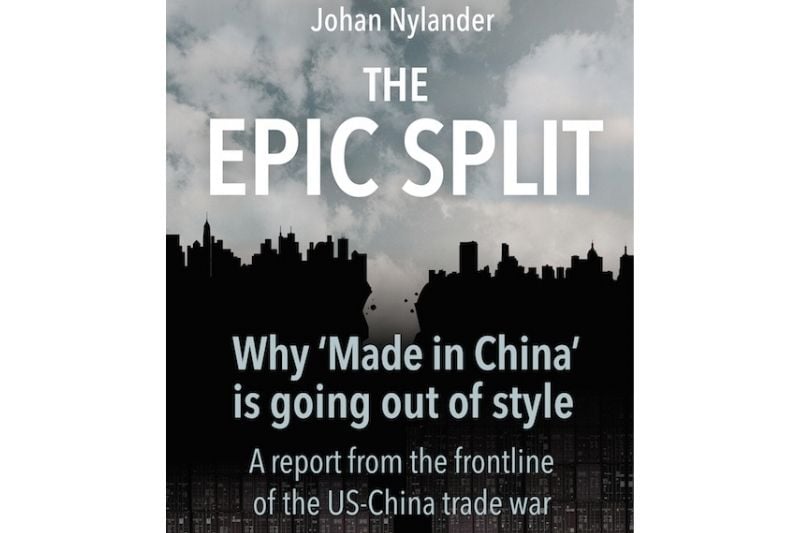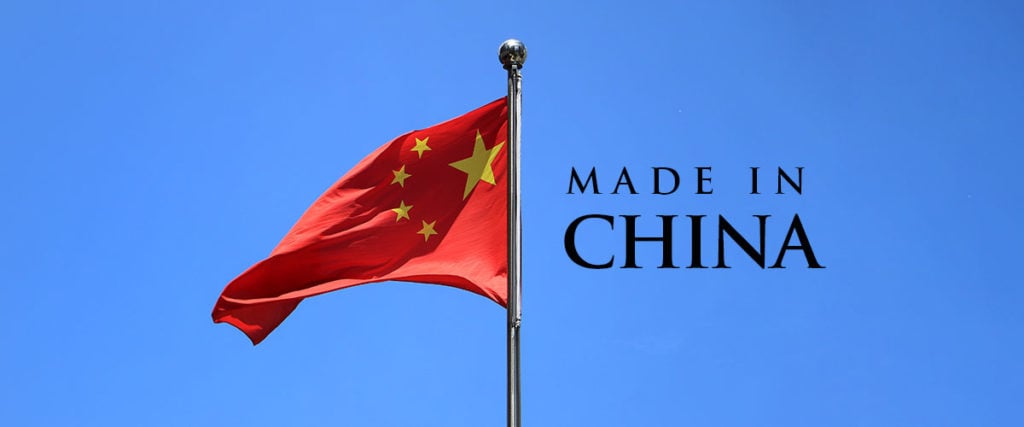Amid escalating US-China trade tensions, award-winning author Johan Nylander talks about how China’s position as the global production hub is at risk.
Undoubtedly the biggest break up the world has witnessed, deteriorating Sino-US relations have left global economies bracing for the worst. To try and make sense of the trade war’s economic implications and its impending political impacts, we sat down with veteran journalist Johan Nylander, China correspondent, and contributing writer for CNN, Forbes, and Dagens Industri, to discuss his insights and observations. With over 10 years of experience covering the Chinese perspective, Johan shares keen insights from his latest book on the matter, The Epic Split: Why Made In China Is Going Out Of Style.
Since 2018, both the US and China have engaged in aggressive power plays, back-and-forth allegations of unfair trade practices, and a series of retaliatory tariffs against each other. “The biggest misconception surrounding the trade war is that it’s only about trade,” states Johan. “Really, it’s a clash of two conflicting ideologies – China’s authoritarian principles versus America’s democratic beliefs – and it’s going to be with us for decades to come.”

The Economic Consequences of the US-China Trade War
Who stands to gain the most from the trade war?
The ramifications of the trade war have weighed heavily on both sides. As the US saw its farming and manufacturing sectors experience all-time lows, American consumers have also had to bear inflated costs as a result of the tariffed Chinese products. China, on the other hand, experienced slowed economic growth as their export competitiveness saw a rapid decline. So is this essentially just going to be a lose-lose situation for everyone?
“The biggest winner in the trade war, whichever way it goes, is going to be Southeast Asia,” says Johan. “You see a massive trend of decoupling – international companies are looking to move production away from China to Southeast Asian countries.” For instance, in July, Samsung Electronics announced that they would cease manufacturing operations in China, diversifying their supply chains to Vietnam and India instead. A series of similar announcements were also made by a plethora of multinational tech and automobile firms like Apple, Mitsubishi, and GoPro.
“A lot of people haven’t realised how much China’s role as a world factory has diminished, and how much Vietnam and India are scooping up,” Johan continues. In 2019, the UN revealed that Vietnam exports of furniture and communication equipment to the US had seen a substantial increase of USD 2.6 billion, while countries like Mexico and India reported a slighter, yet still significant, increase of USD 0.9-1.5 billion that same year.
What were the main factors that prompted the move?
Johan asserts that the manufacturing exodus is not simply a knee-jerk reaction to the trade war. Rather, it has been in the works for over a decade. “You need to pay factory workers much more today than you had to 10 years ago,” he explains. “It started with low-level manufacturing first, with companies like Adidas and Nike phasing out their factories in China. Later on, a lot of companies realised how dependent they were on China and how it’s not good to be dependent on one supply chain to start off with. Now with the rising geo-political conflicts and the pandemic, trust is at rock-bottom and the urgency to reduce dependency on China has heightened across all industries.” For many organisations today, the SEA region poses a far more attractive option, thanks to their booming consumer markets, cheaper costs, and increased cooperation from local governments.
It’s not just China’s position as a global production hub that’s being challenged. Though once touted as being a potential rival to Silicon Valley, a lot has changed since the publishing of Johan’s last book, Shenzhen Superstars, in 2017. In order to mitigate the devastating impacts of COVID-19, China has toughened state control to allow the country to implement quick, centralised decisions, effectively absorbing the pandemic-induced shocks. Ever since then, the country has largely been able to maintain COVID-free status – a feat that only a handful of countries have managed to achieve, though none at the magnitude of China.
However, this move also meant a subsequent weakening of its private sector, accelerating the country’s move away from being a market economy. “A few years ago, Western businesses and delegations were flocking to Shenzhen and Hong Kong, curious to witness the growth of the Pearl River Delta up close. With China advancing the role of state control over state-run companies, while parallelly enhancing its grip on the private sector, the West is now looking upon the region with growing suspicion,” says Johan.

Hong Kong’s Changing Political Climate
And what of Hong Kong’s future?
“Hong Kong is still the gateway between the West and China. It’s still the world’s second-freest economy. Chinese companies will continue to go to the Hong Kong stock market to raise capital and those who want to be part of the rise of China and its booming consumer market will continue to invest here,” maintains Johan.
On 30 June 2020, following a year of pro-democracy protests and unrest, China’s top legislature unanimously passed a new national security law for Hong Kong with the stated objective of preventing, suppressing, and imposing punishment on crimes of secession, subversion, terrorism, and collusion. When asked about his thoughts on the perceived impact this legislation would have on the local business environment, Johan replied, “Hong Kong is still full of opportunities but the rules of the game have changed. The playing field is different now and businesses need to take that into consideration before making key decisions.”
With that said, he doesn’t discredit prevailing concerns regarding increased Mainland involvement in Hong Kong affairs either. “Hong Kong is getting more deeply integrated into the Mainland. You don’t have the same security for capital as you previously did. Which is why Singapore, as the world’s freest economy now, poses for an alternative. I don’t think a lot of companies are going to leave Hong Kong, but with the rise of Southeast Asia, it makes sense to also have a presence in Singapore.”

The Future of China’s Trade & Manufacturing Dominance
Is consumer demand for China-made products waning?
It’s no secret that global perceptions of China have turned increasingly negative, especially in recent months. Following border tensions that left 20 dead, India is now leading the world’s biggest, politically motivated consumer boycott of Chinese products. As part of this move, the Indian government has actively worked towards guaranteeing easy access to land procurement and is providing tax holidays for those looking to leave China and set up shop within the country. Japan has also followed suit by offering rebates to those interested in opening factories on Japanese grounds.
When pressed on whether other factors like political intervention and nationalism are at play, Johan responded, “Businesses are getting more motivated, for sure, to make this decision when cash benefits and economic incentives are involved, but business leaders have to think long-term, right? You don’t pull out from an integrated manufacturing chain just because someone dangles a carrot over your head. Decoupling isn’t just about the manufacturing end; consumer demand plays an equally important role. I have a lot of statistics from the United States and Europe saying that people prefer not to buy products made in China. They’re even willing to pay a premium for products that they know are not manufactured there.”

What’s next for China?
So what will China’s forthcoming plan of action be in retaliation to the phenomenon of “Made in China” going out of style? According to Johan, “They’re raising the walls and closing off the country to the rest of the world. It’s getting more difficult for foreign companies to do business in China and vice versa. In my interview with the founder of Huawei, he said that the trade war has increased the urgency for Huawei and China to become more self-reliant – to rely less on American products and components, both hardware and software. I think China will also rely more on its domestic markets, redrawing into domestic markets. It might work; it might not. It’s a gamble.”
With the US elections around the corner, the world is eagerly tuned in to see what will come of it, with China, in particular, having a vested interest in the final outcome. “At the end of the day, it isn’t going to matter if it’s Donald Trump running the White House or Joe Biden – both of them are going to continue to increase the pressure on China,” Johan explains. “What will be different is how they do it and what strategies they use. Some say that Biden will be a bigger headache for Beijing as he will strategically align with other foreign democracies that are also worried about the rise of authoritarian China. We will need to wait and watch.”
As the world slowly adjusts to a new normal – recessions, warring nations, and successive waves of the pandemic, Johan stresses that his book isn’t an account of the world going up in flames. “It’s a book about opportunities, chance, and how to navigate through a new world of trade wars, decoupling, and consumer boycotts.” In the meantime, he is looking forward to working on his new book. “It’s not about politics or business. That’s all I can reveal at this moment.”
Related Articles
China’s Latest Export Ban Restricts Sale of Advanced Technology, Strategic Materials
Xi Jinping Introduces Economic Reforms For Shenzhen, Promotes HK-Mainland Integration
Singapore Reaffirms Diplomatic Ties with China, Despite Rising US-China Tensions





